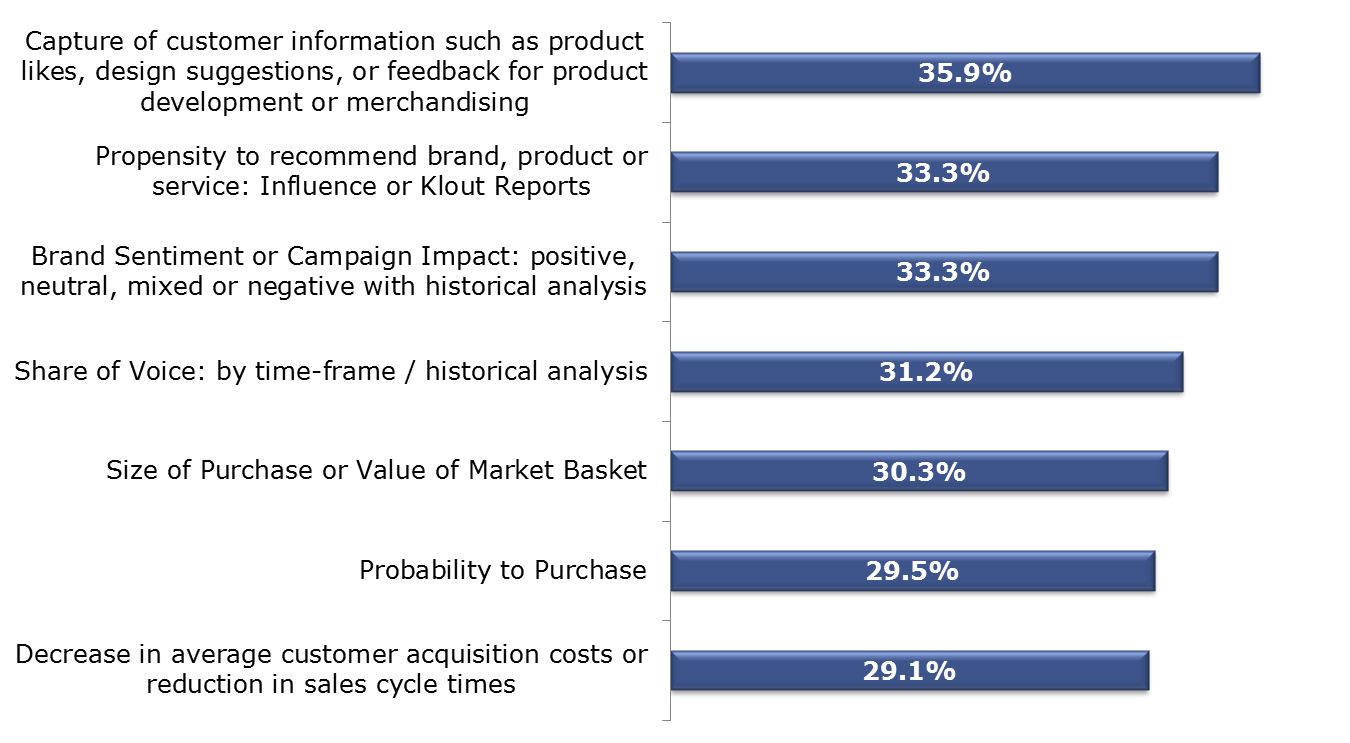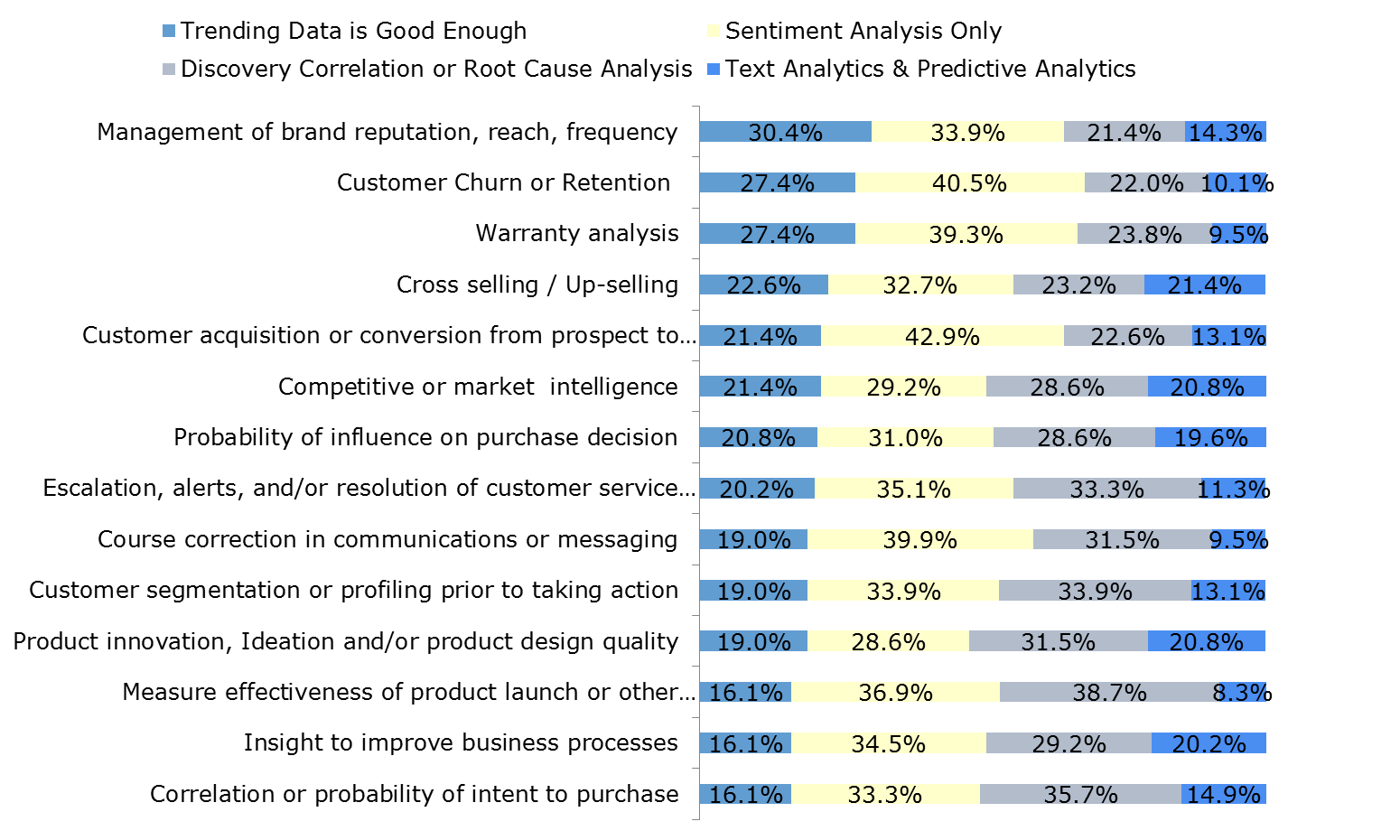Whether one subscribes to the 4 P’s [endnote 1] of market planning — product, place, price and promotion,or the more recent 7 P’s [endnote 2] of marketing — product, price, place, promotion, physical presence, provision of service and processes, it is evident that “product” is the first P of priorities listed. Moreover, the latter 7 P’s are acknowledged as the standard modern marketing mix most relevant in service industries; however, they may be beneficial to any customer-centric business model where meeting the needs of customers is of highest priority [endnote 3].
Incorporate social into product design cycles
We recommend that all those involved in product innovation, service extensions or life cycle management, from the executive level to individual contributors, should rigorously pursue answers to the following questions:
· What does the client/consumer want in regards to our company’s product/service?
· What needs does the product address?
· What features should it have in order to meet these needs?
· Are there any capabilities/features/functionality that we have not yet addressed?
· How and where will the customer use it?
· Is the appearance important to the customer? If so, what size(s), color(s), and so on, should it be?
· How will it be named and branded given our current portfolio of offerings?
· Is it significantly differentiated versus the competition?
· Are we able to position the product/service in a superior manner to the competition?
· What is the most it can cost to provide it and still sell it sufficiently profitably?
· Have we included pricey features that the customer will not actually use?
· Will the customer have a positive experience with our product/service?
Not surprisingly, corporate executives surveyed shared that their top three priorities for measuring the success of their social analytics and intelligence efforts were, in order of importance:
· Capture of customer information such as product likes, design suggestions, merchandising feedback (35.9 percent)
· Propensity to recommend brand, product or service: Influence or Klout Reports (33.3 percent)
· Brand sentiment or campaign impact: positive, neutral, mixed or negative with historical analysis (33.3 percent)
Figure 1: Top priorities for social intelligence initiatives

©2013 Hypatia Research Group, LLC. All rights reserved
Multi-response answers — will not equal 100%
Customer, community and content
Social media presents an enormous opportunity to exploit social media for product innovation! Exploring peer-to-peer forums or communities (public and private), contact center conversations, social networks and blogs all offer a rich trove of material for analysis.
Hypatia Research Group recommends organizations supplement their customer advisory boards with social media with the goal of utilizing this channel as part of their voice of the customer [endnote 4] initiatives. Ideally, social processes for product innovation professionals should be operationalized with a focus on intelligence gathering, prototype testing (via private [endnote 5] social community networks or forums) and feasibility analysis. Hypatia advises enterprises to:
· Listen to relevant information sources
· Analyze for trends, product likes, design and merchandising suggestions and all types of feedback relating to product or service offerings
· Innovate and enhance product/service offerings, streamline product portfolio planning and manage product life cycles with input from social channels.
To everything there is a season and a purpose [endnote 6]
Few social software solutions actually provide line-of-business managers — rather than IT — the ability to create rules-based routing of customer conversations that are prioritized and categorized by predefined issues. In short, what makes social media conversations truly actionable?
· Will guidance provided by trending data or simple sentiment analysis provide enough intelligence for business process innovation?
· Is discovery correlation, text analytics or predictive analytics required to take action based on certain customer profiles or clusters?
· If an organization wishes to give preferential treatment to customers with high influencer scores or annual customer profitability levels, what is required? (For example, routing higher-value customers to the top of the action queue while known “complainers” are given lower priority.)
Figure 2: What makes social intelligence actionable?

©2013 Hypatia Research Group, LLC. All rights reserved
Operationalizing the value derived from social media channels does require the ability to map a best-practice customer journey by specific priority, topic or issue. Realizing concrete benefits from social investment also requires the ability to configure these business process workflows according to customer-centric policies as defined by internal stakeholders such as the chief customer or chief marketing officers.
Bottom line
Our assessment is that organizations should take a balanced approach to enterprise social business. “Know when to listen, know when to analyze, know how to influence and when to act and engage” [endnote 7].
Endnotes
1. E. Jerome McCarthy proposed a four Ps classification in 1960 as a framework for fine-tuning the marketing mix; http://en.wikipedia.org/wiki/Marketing_mix#McCarthy.27s_Four_Ps.
2. Brian Tracey, “Million Dollar Habits: Proven Power Practices to Double and Triple Your Income,” Entrepreneur Media Inc., 2004
3. “Rethinking the 4 P’s,” January-February 2013 Harvard Business Review.
4. Leslie Ament, “Operationalizing Voice of the Customer: Maturity Models, Best Practices & Benchmarks,” Hypatia Research Group, 2010.
5. Hypatia Research Group POV: We encourage use of private social ntworks for product innovation, lest the competition benefit from social investments.
6. Influenced by Pete Seeger song lyrics, “Turn! Turn! Turn!” (also known as “To Everything There is a Season”), based on text from the Book of Ecclesiastes and attributed to King Solomon.
7. Influenced by Kenny Rogers, “The Gambler” song lyrics: “You got to know when to hold ’em, know when to fold ’em, Know when to walk away and know when to run,” © Sony/ATV Music Publishing LLC.
Leslie Ament, SVP of research & principal analyst at Hypatia Research Group, is a Customer Intelligence Management thought leader and analyst who focuses on how organizations capture, manage, analyze and apply actionable customer insight to improve customer management techniques, reduce operating expenses and accelerate corporate growth. Her coverage areas include CRM, Business Intelligence, Social Media Intelligence/Search/Text Analytics, Web Analytics, Marketing Automation & Customer Data Management/Data Quality. Ament has driven process requirements gathering implementation for both on-premises and SaaS CRM systems. Contact her at LAR@HypatiaResearch.com.
This article is adapted from “Using Social Intelligence to Enhance Customer Centricity: A Practitioner’s Guide for Marketing, Sales & Customer Care Executives.” ©2013 Hypatia Research Group. All Rights Reserved. NOTICE: Information contained in this publication has been sourced in good faith from primary, secondary and end-user research and is believed to be reliable based upon our research methodology and analyst’s judgment. Ultimate responsibility for all decisions, use and interpretation of Hypatia research, reports or publications remains with the reader, subscriber or user thereof.
